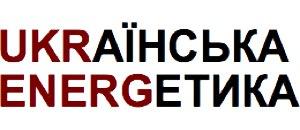The Decarbonization Fund may become a powerful instrument, but all depends on the revenue
In November 2020, the Energy Ministry came up with an initiative to create the Decarbonization Fund with the support from the Ukrainian-Danish Energy Center and the State Agency for Energy Efficiency and Energy Conservation. The Fund is expected to provide support to projects concerning modernization of generating enterprises and heat networks, domestic waste processing, public and personal electric transport, bioenergy and other. A portion of carbon dioxide emission tax is going to be the main source of the Fund’s revenues. Also, the draft law 4347 on the establishment and revenues of the state decarbonization fund was submitted to the Verkhovna Rada on 9 November.
Overall, the Energy Ministry’s proposal is essentially a step in the right direction, because it actually has the purpose of spending the greenhouse gas emission charge specifically on reducing emissions of those very greenhouse gases, thus performing a stimulating role in the transition to the “green” economy. In the past, СО2 emission tax was remitted to the general fund of the state budget and was “diluted” in it, because it had no specific purpose. But now, it was proposed to create a separate budget item for the Fund and place it under administration of the State Agency for Energy Efficiency and Energy Conservation. The government’s desire to avoid establishing new institutions and incurring additional administrative costs is also a plus. However, these intentions, as well as certain other plans of the Energy Ministry concerning the Fund, may overlook possible “pitfalls”.
The major issue is the Fund’s future amount, i.e., whether it will have enough money to implement a substantial number of projects in the seven planned areas. Thus, the carbon tax regulation applies only to enterprises whose emissions exceed 500 tons per year, and the amendment introduced in 2018 relieves polluters from the requirement to pay for the first 500 tons, even if their emissions exceed this threshold. Therefore, an enterprise emitting 501 tons of carbon dioxide will pay tax on only one ton. Overall, budget revenues from carbon dioxide tax aren’t that large. Thus, the draft law 4347 envisages that in 2021, the state budget will receive almost UAH 2.7 billion in environmental tax charged on emissions.
In addition, the draft law states that only 50% of this revenue will be remitted to the Fund. This amount is critically low to cause any systemic shifts toward decarbonization of the economy. For example, one of the areas of the Fund’s expenditures will include support for ecological modernization of generating enterprises. The Fund could play an important role in implementing the National Emission Reduction Plan (NERP), but the amount of capital investments required to fulfil the plan may reach 4.13 billion euros by 2034. In other words, ecological modernization of heat and power generating plants needs huge outlays. If UAH 1.35 billion is divided among the seven project areas, it would be enough only for small targeted projects.
The amount of the Fund’s revenues can be increased, firstly, by allocating the full amount of carbon tax remittances to it, and secondly, by raising the rate of the tax itself. Presently, the tax rate is 10 hryvnias (0.3 euros) per ton of emissions, which is one of the lowers levels of СО2 tax in Europe, above Poland only. For example, the rate of this tax in Latvia is almost 9 euros per ton, in Spain 14 euros, and in European countries overall it exceeds 20 euros per ton. If the draft law 4347 is passed, the rate will increase to 30 hryvnias per ton. However, in order to effectively stimulate reduction of greenhouse gas emissions, Ukraine must raise the tax rate to at least 2-3 euros per ton, which can be done in phases within 3-5 years.
It would also create more space for investment activity and subsidization of climate projects from the Fund. For one of its goals is to reduce carbon intensity of Ukrainian products and avoid carbon tax on imports, which the EU may introduce already in 2021. With one billion hryvnias, it will be hard for Ukraine to significantly lower the carbon content of its exports to European countries, because much higher sums are required for that.
Another issue is the Fund’s administration by the State Agency for Energy Efficiency and Energy Conservation. On the one hand, it will relieve the government from the need to create new institutions and spend time and financial resources on it. But at the same time, the variety of areas of the future projects which the Fund will support needs competencies of specialists in the relevant fields, technical expertise and understanding of the specifics of investing in a particular sector. It is quite possible that the State Agency for Energy Efficiency and Energy Conservation presently does not have all required specialists, and therefore, if this agency will, nevertheless, be made responsible for overseeing the Fund it will have to ensure technical support.
Therefore, creation of the Decarbonization Fund is the right initiative, tested in practice by more than one European state. The support for “green” transition funded by emission tax will send the right signals to the market: the polluter pays, and development of sustainable and low-carbon projects receives support. However, to achieve significant effect in decarbonization of the economy, the government will have to take into account certain important aspects before implementing this initiative or to expand the scale of its operation afterwards.
DiXi Group Junior Analyst




